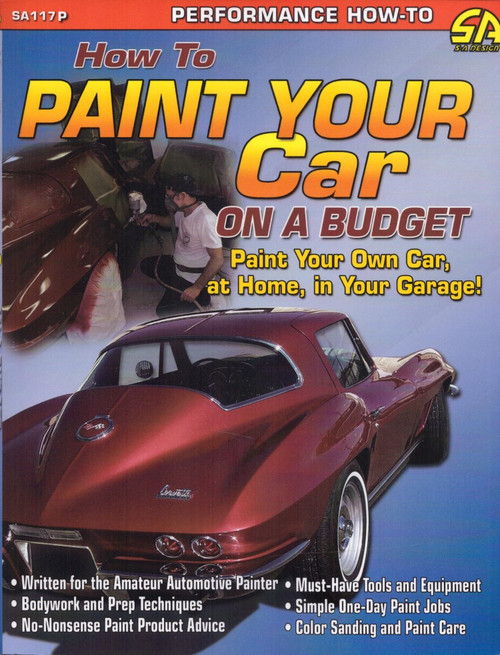If your car's body looks far from new, maybe a touch-up will be enough. But in some cases, only a complete paint job will be able to return the vehicle back to its former glory. The good news is, you don't need a pro painter to do the work for you, and this book will show you inexpensive alternatives available for the do-it-yourselfer in the comfort of their own garage. How to Paint Your Car on a Budget has been a popular book at The Motor Bookstore for many years, and with good reason. In its pages, author Pat Ganahl reveals many secrets that are crucial for getting a great-looking finish on your car, while saving lots of money at the same time. From the basics such as getting the vehicle ready for paint, to today's paint products and equipment, all the way to color-sanding the new paint, How to Paint Your Car on a Budget covers it all.
Book Excerpt: How to Paint Your Car on a Budget BODYWORK 101
Believe it or not, there was a time when using lead as a filler when doing automotive bodywork was considered "quick and cheap." The proper method, then, was called "metalworking," and it consisted of hammer-and-dollying the metal straight as much as possible; shrinking or stretching other areas of metal as needed, possibly using heat from a torch; and finally filing very small ripples or imperfections from the surface with a Vixen body file. PLASTIC FILLERS There is nothing wrong with good quality filler applied properly and sparingly. In fact, there are a few reasons why filler is better than lead. 1st. It's much lighter and considerably cheaper and easier to apply - without special tools, talents, or products. 2nd. Applying lead requires heating the sheetmetal with a torch, which warps it. 3rd. The leading process involves acids and other chemicals (in the lead, tinning, etc.) that can come back to lift, bubble, or craze the final paint, sometimes years later, if not thoroughly washed and cleaned away.
PREP, SAND AND MASK
The first "prep" step of any good paint job is to remove as many parts from the car as feasible that aren't supposed to be painted. This not only makes the ensuing bodywork, sanding, masking, and painting steps much easier, it also allows you to paint all surfaces that were painted originally.
This book covers painting equipment, the ins and outs of prep, masking, painting and sanding products and techniques, and real-world advice on how to budget wisely when painting your own car. It?s the most practical automotive painting book ever written!
Subject: How to paint your own car at home, in your garage. ISBN-10: 1613258380 | ISBN-13: 9781613258385 | CarTech SA117P
- Introduction
- To Paint or Not to Paint
- To Strip or Not to Strip
- Bodywork 101
- Equipment For Home Painting
- Today?s Paint Products
- Prep, Sand, and Mask
- One-Day Wonder
- Scuff and Squirt
- The Full Job
- Going Further
- Color Sand and Rub Out










